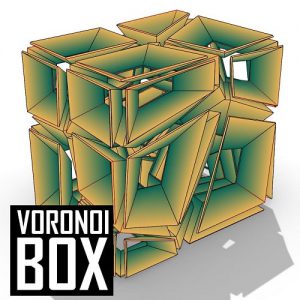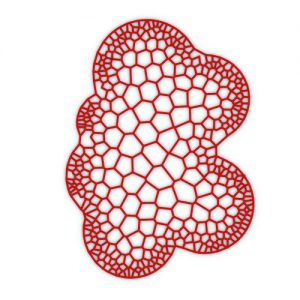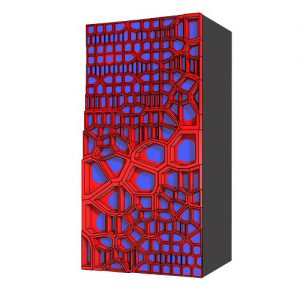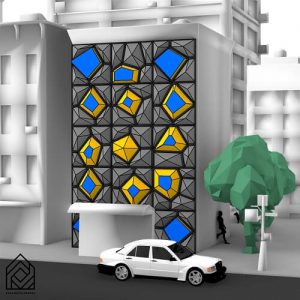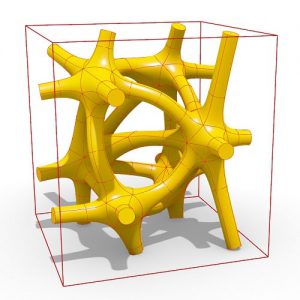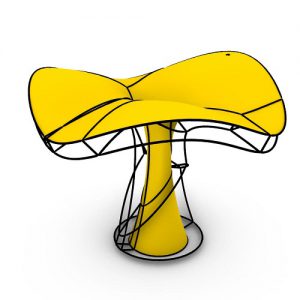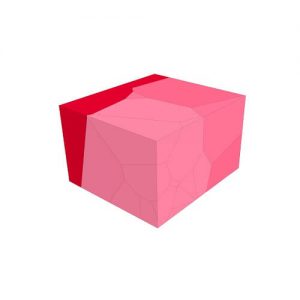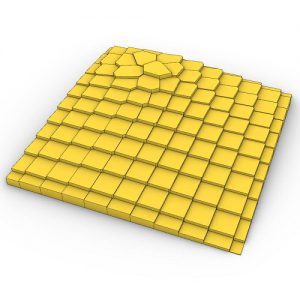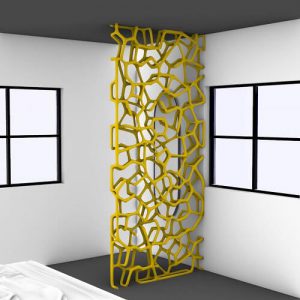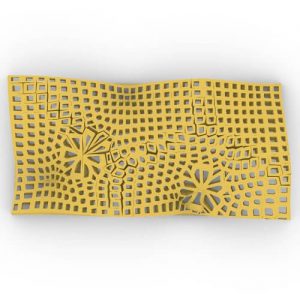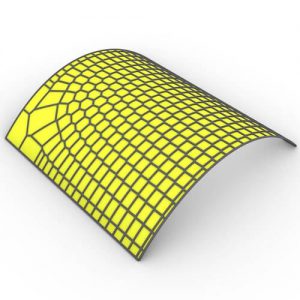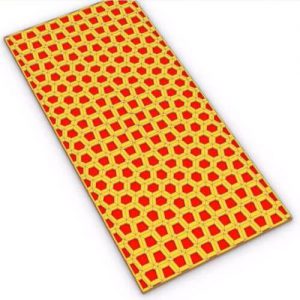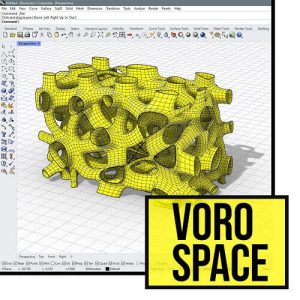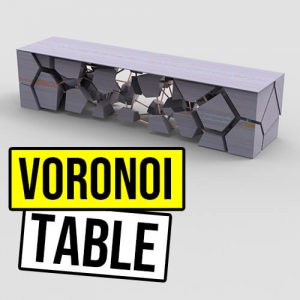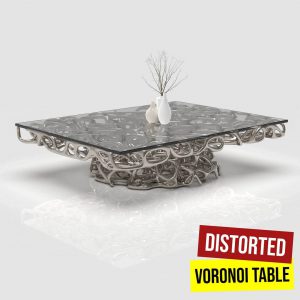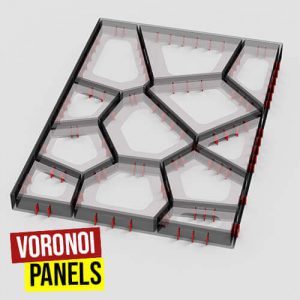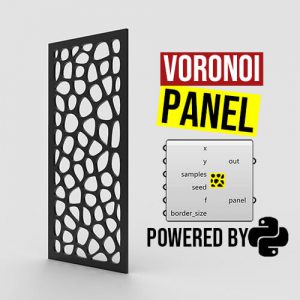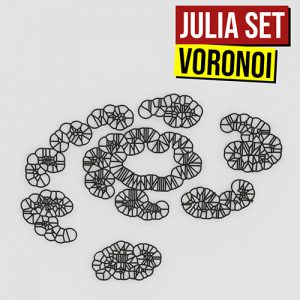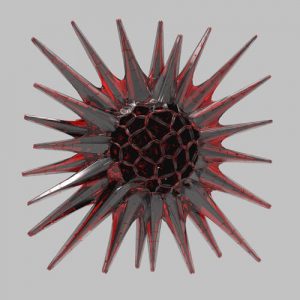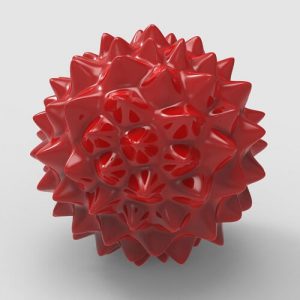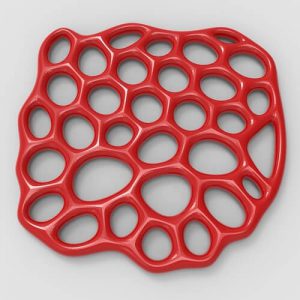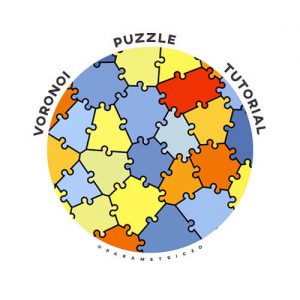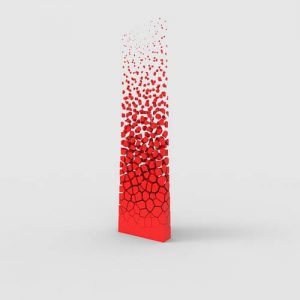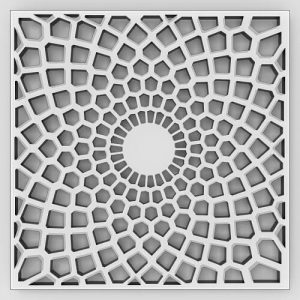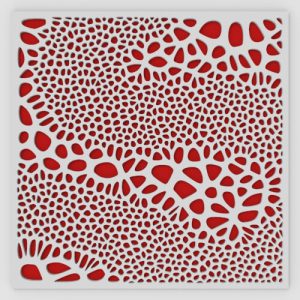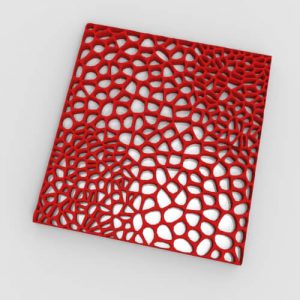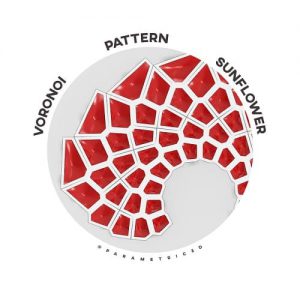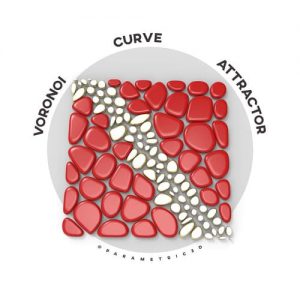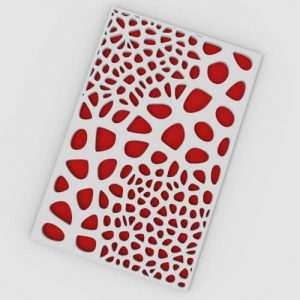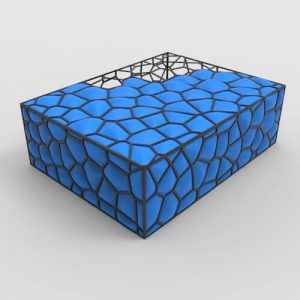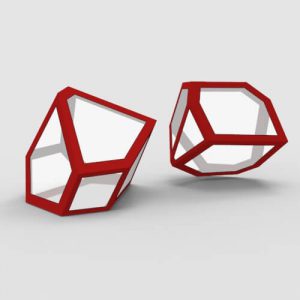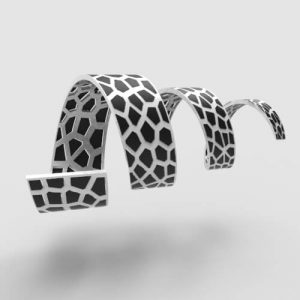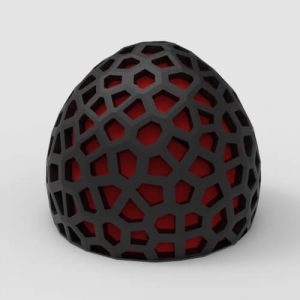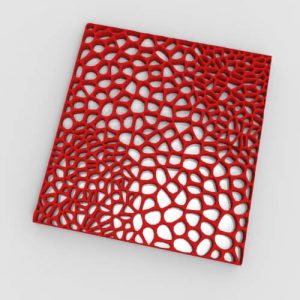Grasshopper Voronoi Ideas
In this grasshopper example, you can generate a window-like mesh from 3D voronoi cells inside a box.
In this grasshopper example file, you can create a Voronoi Pattern inside a curve and then change the area of the Cells with an attractor Point using the Anemone Plugin.
in this grasshopper example file, you can design a 3D Voronoi facade by defining attractor points and using Graph Mapper and the LunchBox plugin.
In this grasshopper example file you can design a parametric Voronoi facade and then convert a series of selected cells into windows.
In this grasshopper example file, you can create random Voronoi 3D cells and then use the attractor points to select the desired cells and give them different functions.
In this Rhino Grasshopper tutorial, we are going to use the Voronoi3d combined with a multipipe (Rhino 7) component to model a parametric 3d form in a Box.
In this Grasshopper example file you can use the Parakeet plugin to model a parametric Voronoi-based tower.
In this Grasshopper example file you can use the native Grasshopper components combined with the Pufferfish plugin to create a parametric surface with Voronoi patterns.
Lloyd's algorithm, also known as Voronoi relaxation, finds evenly spaced sets of points in subsets of Euclidean spaces. In this grasshopper example file you can create a Voronoi pattern by using the Anemone plugin combined with the Lloyd's algorithm.
In this grasshopper example file you can apply a spin force on a series of voronoi cells.
In this Grasshopper example file you can create a 3D Voronoi Partition Pattern by using the Fattener plugin to give it some thickness.
In this grasshopper example file you can model a Deformed Voronoi pattern on a catenary surface.
In this grasshopper example file you can create parametric voronoi cells by defining point attractors and deforming them based on that point.
In this rhino grasshopper example file you can create a 2d pattern by applying spin force on a series of voronoi cells.
In this grasshopper example file, you can model a parametric 3D voronoi form which is inspired by a code written by Co-de-iT and named Vorospace.
In this grasshopper Example file you can create a parametric form filled with 3d voronoi cells. You can use any untrimmed Nurbs surface by using the Stella3d plugin.
In this grasshopper example file, you can model a parametric table which is made out of a series of 3D Voronoi cells connected together with lines.
In this grasshopper example file you can model a series of random voronoi panels and extract the final curves for fabrication.
In this premium python script you can create a parametric panel with random voronoi cells.
In this grasshopper definition, you can create a series of 2d voronoi cells based on thhe julia set fractal.
In this grasshopper definition you can create a sphere which is covered with a series of Voronoi cells and then extrude some of them in the normal direction to model a sun-like shape.
In this grasshopper voronoi tutorial by using Stella3d plugin and fatten we model an expanding voronoi. First we use steall3d v2 to collide a series of random points together and then we are going to use delaunay mesh and dual graph to make the cells.
In this grasshopper definition you can use the "facet dome" component to cover a sphere with voronoi cells and then move the centroid in the normal direction to finish the model.Finally you can use the weaverbird plugin to smooth the geometry.
In this grasshopper definition by using the Stella3d plugin and Weaverbird you can model a parametric expanding voronoi cell model.
In this Grasshopper tutorial, we will model a Voronoi Puzzle and discover how the connections can be made. In the end, you will learn how to put numbers on the pieces. You can even use this technique to make a parametric facade.
In this grasshopper definition you can change size of voronoi cell by changing attractor location.
In this Paracourse Lesson, I'm going to teach you how you can model decorative Voronoi panels and produce the polylines for laser cutting or CNC milling. We will first use a technique to produce the cells and then change the parameters to produce desired results.
In this Grasshopper Course lesson, I will use the image sampler and combine it with Voronoi cells. Basically, this will help you understand how to analyze images brightness for geometry transformations.
In this Tutorial, I will show you how you can use the Voronoi command in Grasshopper and how you can use it to produce the Voronoi cells. First we will talk about the random nature of voronoi cells and then we will use populate...
In this Grasshopper tutorial, we produce a Voronoi Pattern based on Sunflower seed distribution. The technique we will use is the Maelstrom component to twist a series of straight lines so we'll not use the actual Fibonacci sequence to produce the Voronoi cells but it's a quick trick you can use to produce a pattern similar to it.
In this Grasshopper Voronoi tutorial, we will use curve attractors to control the Voronoi cells. First, we will use a boundary to make the base Voronoi cells and then we will define a curve and populate random points in it. In the end, we will use dispatch to split the cells into two groups.
In this Grasshopper Voronoi attractor tutorial, I will show you how you can produce point attractors for Voronoi cells. First, we will make the desired boundaries and then populate points in them to increase the number of Voronoi cells.
In this Grasshopper tutorial, I will model the Bejing Water Cube in Grasshopper. First I will explain the steps we have to take to reach the final model and then I will explain the steps one by one. We will start with a shell box and then use Voronoi3d to produce the results.
In this Grasshopper tutorial, I will talk about the Voronoi cell component and how you can combine it with weaverbird to produce smooth mesh. First, we will talk about the center point and the neighbors and then by defining the bounding box, you can produce the Voronoi cell.
In this grasshopper tutorial I will talk about the populate geometry tool and how you can use it to produce a set of voronoi cells on a freeform surface. First we will make a rectangular boundary based on our freeform surface and then we will make the voronoi cells.
In this grasshopper tutorial, I will explain how you can use the Facet Dome tool to produce Voronoi cells on a revolved surface. First we are going to produce the surface and then pull the voronoi cells on the surface and then make the frames.
In this video tutorial, I will show you how you can use the Voronoi3d tool and how you can use it to produce Voronoi cells on a 3d NURBS model. You can easily produce 3d voronoi cells in grasshopper with the Voronoi3d tool and random distributed points.
In this Tutorial, I will be show you how you can use the Voronoi command in Grasshopper and how you can use it to produce the Voronoi cells. First we will talk about the random nature of voronoi cells and then we will use populate...



